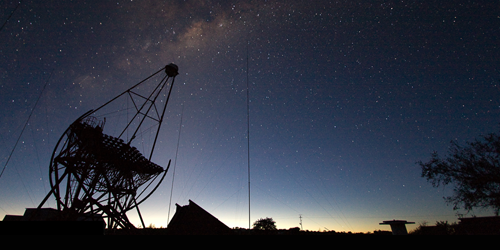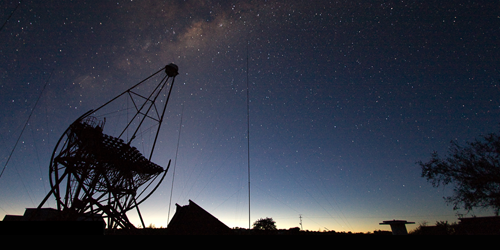Ten-Year Search Finds No Signs of Dark Matter Annihilation
Dark matter constitutes roughly 85% of the matter in the Universe and yet stubbornly refuses to reveal its true identity. One leading candidate for dark matter is a hypothetical particle known as the weakly interacting massive particle (WIMP). When two WIMPs collide, they may annihilate and release other particles, including gamma-ray photons. Now, researchers from the High Energy Stereoscopic System (H.E.S.S.) Collaboration report that their ten-year search for WIMP gamma rays coming from the center of our Galaxy has come up empty. The team does, however, place the best constraints to date on the cross sections for WIMP annihilation, which should help researchers ferret out plausible candidates from a sea of possibilities.
When WIMPs annihilate, they are expected to produce sharp gamma-ray emission lines whose wavelength is set, in part, by the particle’s mass. The central region of the Milky Way is a prime hunting ground for these emission lines, since it is expected to harbor a high concentration of dark matter. What’s more, its proximity to Earth should make the observation of faint gamma-ray signals easier than observations of signals from other galaxies or from the Milky Way’s outskirts.
Using the H.E.S.S. array—five gamma-ray telescopes in Namibia—the team spent ten years scanning the sky around the Galactic center. They found no statistically significant excess of gamma rays. The null result did, however, allow them to improve existing constraints on the annihilation cross section by up to a factor of 6 in the 300 –70 mass range, which is considered the most viable by leading WIMP models.
This research is published in Physical Review Letters.
–Christopher Crockett
Christopher Crockett is a freelance writer based in Montgomery, Alabama.





